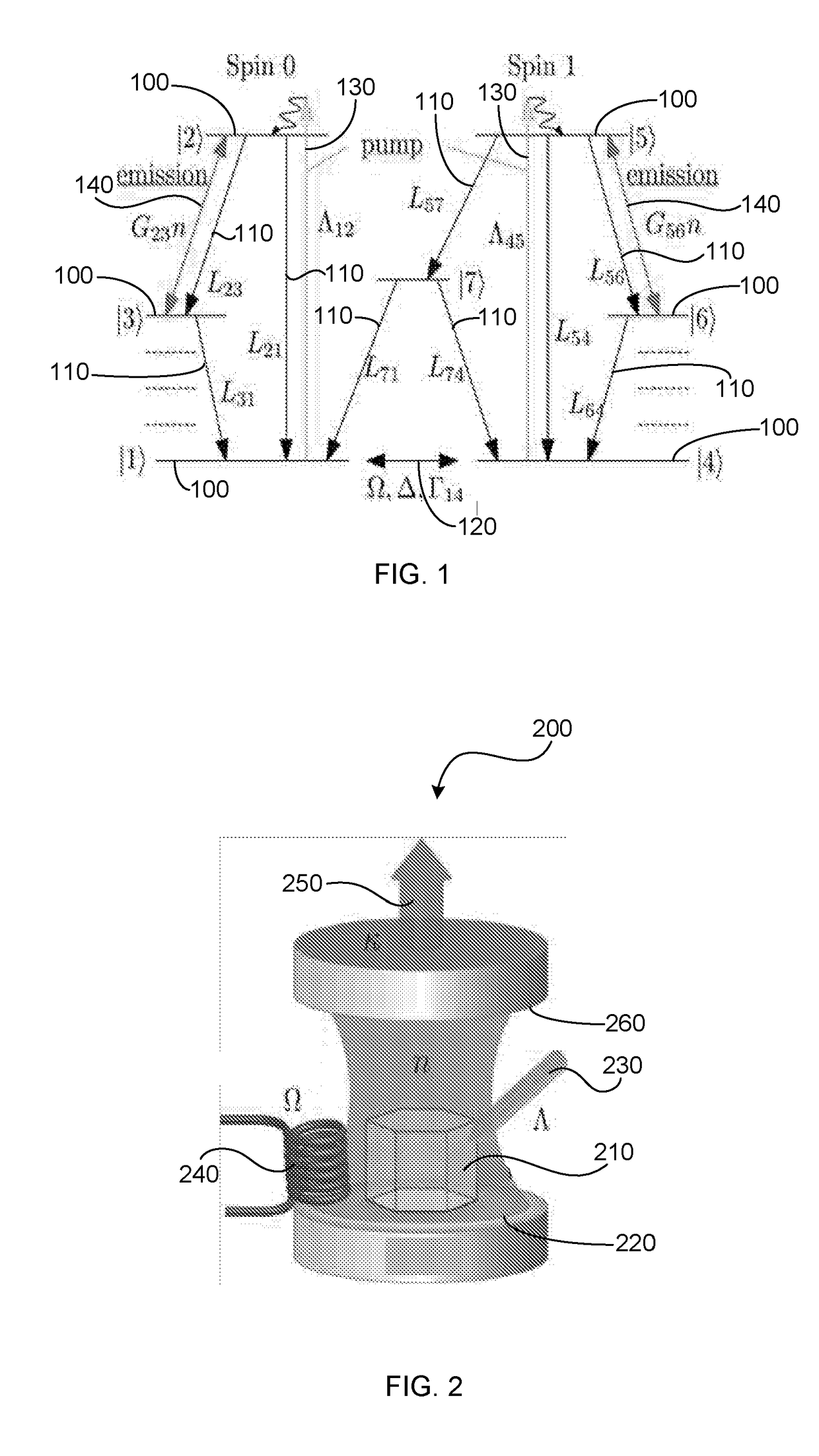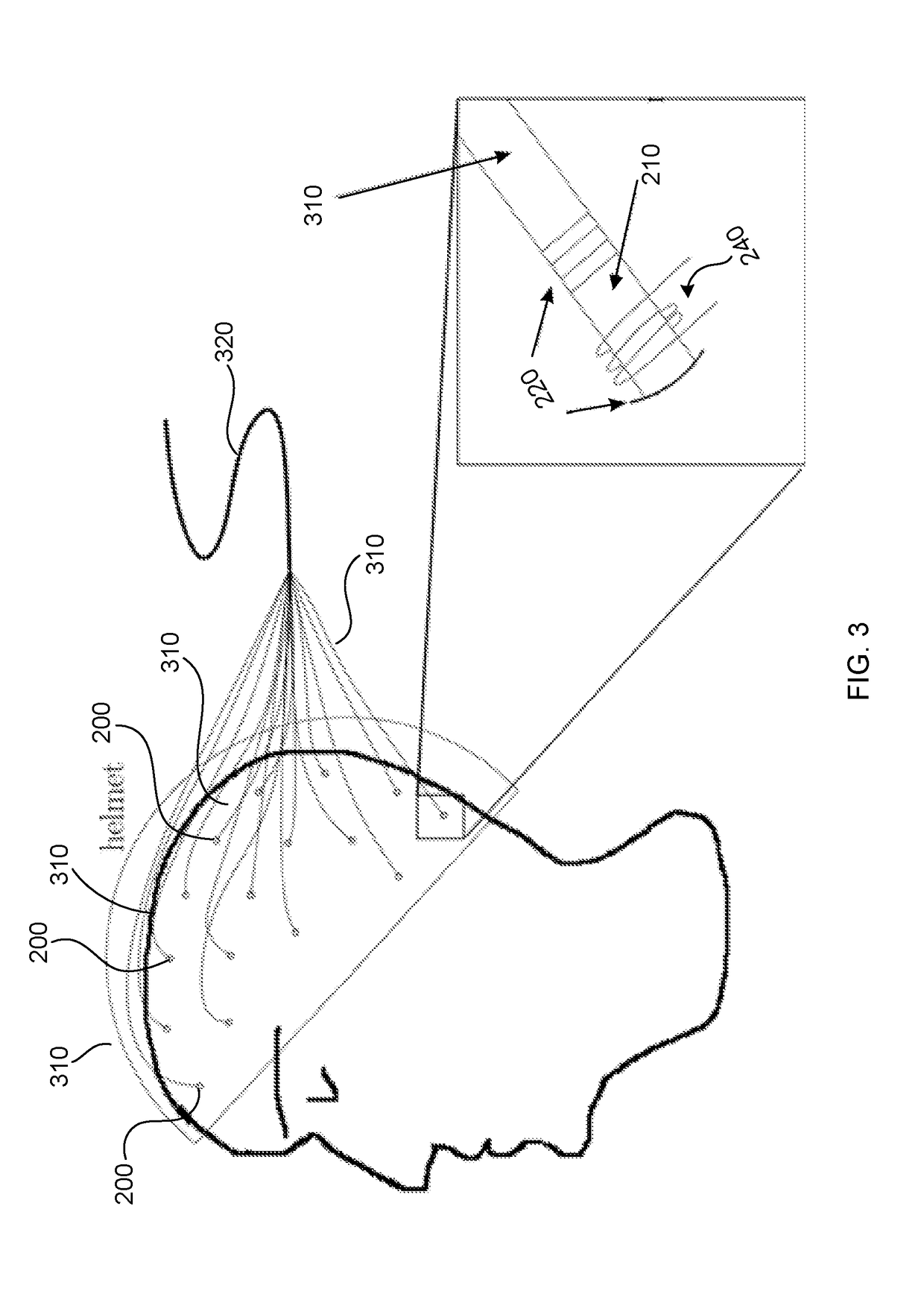A magneto-encephalography device
- Summary
- Abstract
- Description
- Claims
- Application Information
AI Technical Summary
Benefits of technology
Problems solved by technology
Method used
Image
Examples
Embodiment Construction
[0019]The present invention is directed to a magneto-encephalography device which is based on one or more laser threshold sensors. The construction and operation of a laser threshold magnetometer is described below. Additional detail is provided in co-pending U.S. patent application Ser. No. 14 / 879,769 filed on 9 Oct. 2015 to RMIT University.
[0020]A laser consists of at least a laser medium, a cavity and a laser pump, which is typically a light source, typically in or close to the visible range or electrical pumping, which is applied to the laser medium. The laser pump lifts single atoms or single colour centres of the laser medium into an energetically higher lying excited state. From this excited state the laser medium returns to an energetically lower lying state; the energy difference is emitted as light (a photon). The photon is created with a wavelength and energy corresponding to that energy difference of the two states. The lower lying energy state has multiple states slight...
PUM
 Login to view more
Login to view more Abstract
Description
Claims
Application Information
 Login to view more
Login to view more - R&D Engineer
- R&D Manager
- IP Professional
- Industry Leading Data Capabilities
- Powerful AI technology
- Patent DNA Extraction
Browse by: Latest US Patents, China's latest patents, Technical Efficacy Thesaurus, Application Domain, Technology Topic.
© 2024 PatSnap. All rights reserved.Legal|Privacy policy|Modern Slavery Act Transparency Statement|Sitemap


